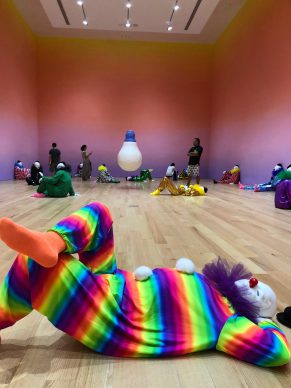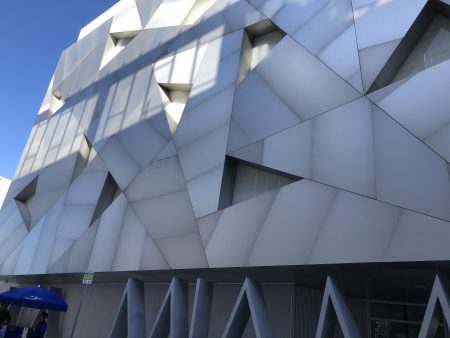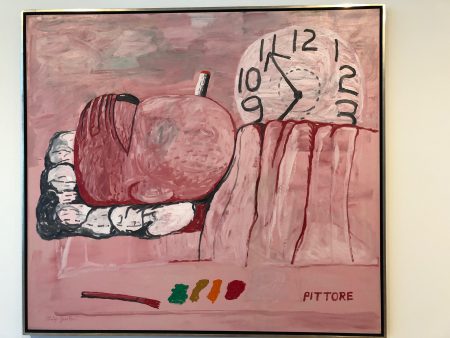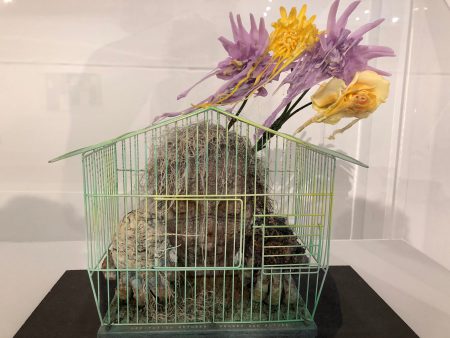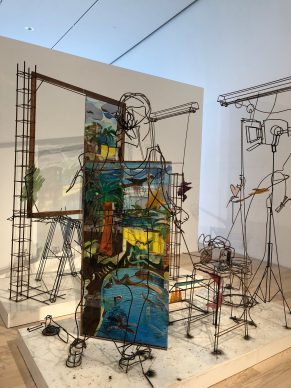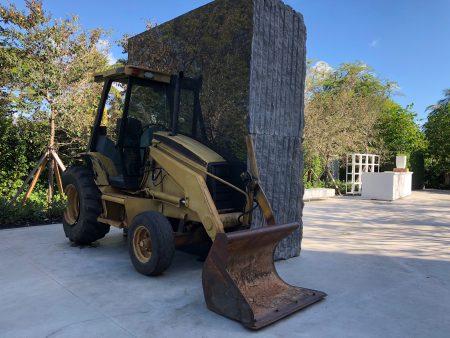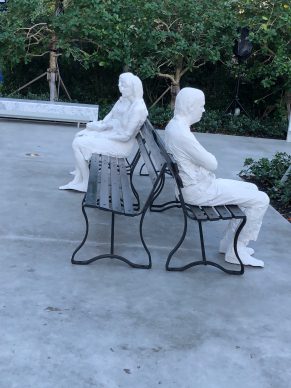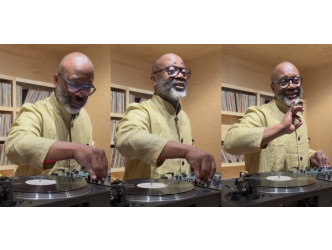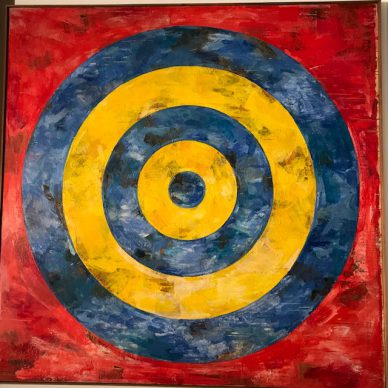In such a context the art exhibited in this city newly impassioned by contemporary creation, thanks to the arrival of the Art Basel Miami Beach fair (see my previous post), is generally speaking, with the exception of the private collections, of a rather obvious, instantaneous and spectacular nature.
You’ve only got to look at the newly reopened Bass Museum to confirm this.
The institution, which houses art from all eras, closed in 2015 for refurbishment and its new incarnation was unveiled to the public on 6 December with three mini-exhibitions dedicated to the Belgian-Cameroonian artist Pascale Marthine Tayou, the Israeli-Argentine artist Mika Rottenberg and the very on-trend Swiss-American artist Ugo Rondinone.
By far the most spectacular piece from these shows is a room conceived by the latter artist, featuring 45 hyperrealist life-size clowns arranged in various postures around a large gallery space.
The artwork, which is called “Vocabulary of Solitude” (2014-2016), is at once amusing and unsettling in that it seems to infinitely multiply this image of the grotesque.
The presence of the clown immortalized in a posture which creates confusion is not new to Rondinone’s work.
The first time I saw one was in 2004 at an exhibition organized by the excellent curator Eric Troncy at the Lambert Collection in Avignon.
Here Rondinone has simply multiplied the effect by 45.
Artists are used to infinitely adapting and rearranging their own work. And why not? This “Vocabulary of Solitude” makes us think that in truth we are all clowns, especially in light of the profusion of images on Instagram showing visitors to the gallery posing next to the clowns, imitating their postures.
Up until now art in Miami has always been a bit like this installation by Ugo Rondinone. It may flirt with a deeper meaning, but it still requires a strong dose of the playful, the attention-grabbing, and the spectacular.
The major break with this line of bling and glamour emerged without warning just last week on 4 December, with the opening of the ICA or Institute of Contemporary Art in Miami.
The museum, founded thanks to local goodwill and generosity, has Ellen Salpeter as director and Alex Gartenfeld as chief curator.
Ellen Salpeter explains the spirit of the museum:
From the very first artwork on show it’s clear that the museum is seeking strong displays, with the permanent collections section featuring an entire room dedicated to the long-underrated brilliance of American artist Edward Kienholz (1927-1994).
This work deals with solitude, social conventions, boredom, unhappy couples. Not very Miami, is it?
Upstairs, “The Everywhere Studio” exhibition – a bit of a catch-all title – tells the story of what actually goes on in the studios of contemporary artists.
But the ICA is not afraid of a bit of history in displaying for example a magnificent “Anthropometry” painting by Yves Klein, from a time when nude women covered themselves in blue paint in his studio to make highly sensual works of art, or even an exceptional painting by Philip Guston christened “Pittore”, depicting a large head in profile, lying down and smoking next to a clock.
To be a painter in one’s studio is also to be a dreamer…
The Japanese artist Tetsumi Kudo (1935-1990), who spent a lot of time in France, was obsessed by ecological disaster, masculine sexuality and vegetation.
In an excellent series of three birdcages each containing a monstrous head he depicts the gestation of the artist’s thought, held captive by his obsessions.
These artworks from the 1980s are called “Portrait of the artist in crisis”. The American artist Nicole Eisenman (born in 1965) is displaying a 2016 canvas, “Morning Studio”, that depicts a twenty-first-century version of the muse inspiring the female painter.
And Neil Beloufa (born in 1985), the French artist who has already had his own solo show at Moma in New York, has reconstituted his studio in the form of a three-dimensional piece made out of metal. You leave the gallery with the impression that these representations of artists’ studios resemble faceless self-portraits.
This exhibition at the ICA presents a great historical scope and a range of artists that doesn’t simply adhere to the art market’s top 50.
Even if it is a little too dense at times, featuring artworks that aren’t always obviously relevant to the subject, overall it is remarkable; even more so given that it is located in surely the “blingest” place on the planet: Miami.
thebass.org
www.icamiami.org
Support independent news on art.
Your contribution : Make a monthly commitment to support JB Reports or a one off contribution as and when you feel like it. Choose the option that suits you best.
Need to cancel a recurring donation? Please go here.
The donation is considered to be a subscription for a fee set by the donor and for a duration also set by the donor.

